
Chapter 5: Newton's Laws of Motion
Introduction
The previous chapters dealt with motion without regard for it causes i.e., kinematics. This chapter, however, deals with dynamics which is study of the causes of motion.
The principles of dynamics are summed up by Newton's Laws of motion and based on experimental studies of moving objects.
5.1 Force
A force is a quantitative measure of the interaction between two objects, represented by a vector.
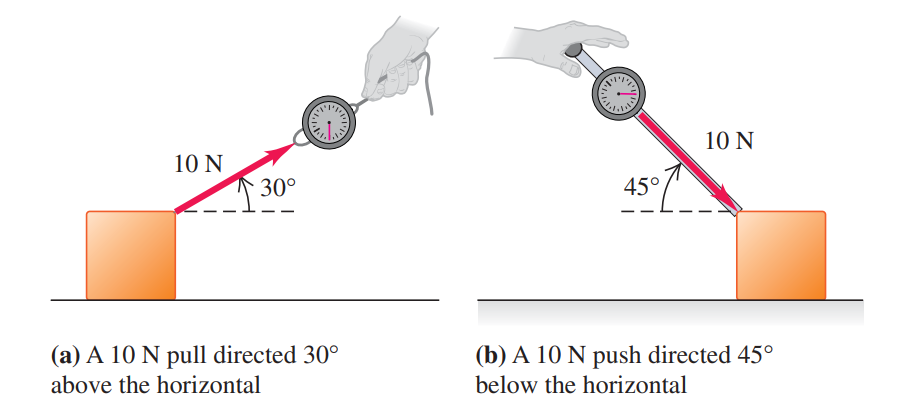
A force is also a push or pull acting on an object.
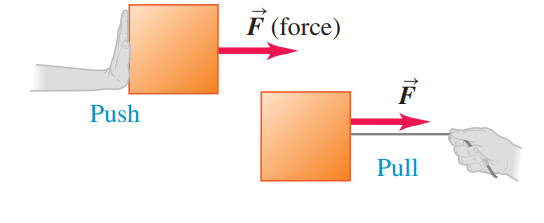
Types of Forces
A force between two objects touching at a surface is called a contact force.
A contact force has two components:
a component perpendicular to the surface, known as a normal force.
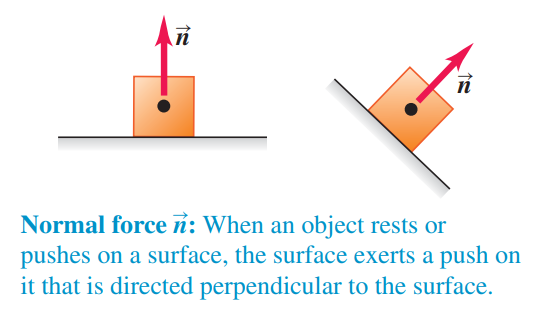
a component parallel to the surface, known as friction force. This force acts to resist the sliding of the object on the surface.
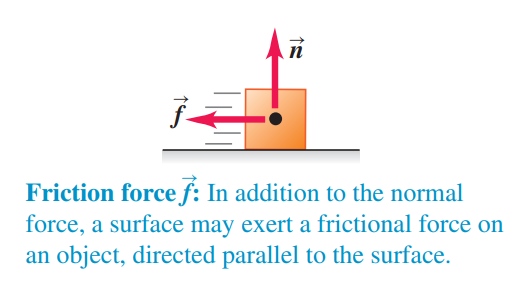
A rope or cord attached to an object and pulled conveys a force known as tension.
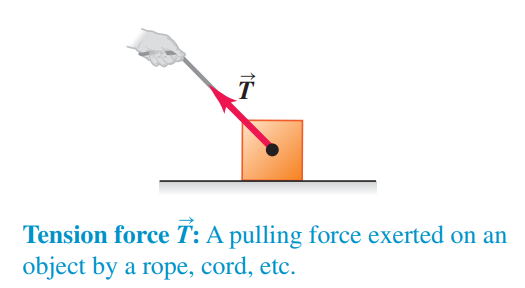
The gravitational force exerted on an object by the earth, or other astronomical body is the object’s weight.
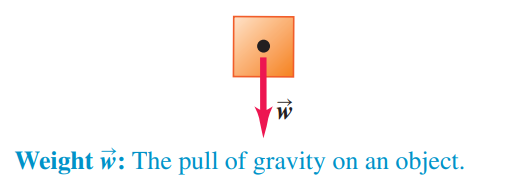
Measuring Force
Force is a vector quantity which means it has a magnitude and a direction. The SI unit of the magnitude of force is the newton(N).
A common instrument for measuring forces is the spring balance. It consists of a coil spring, enclosed in a case and a pointer attached to one end and is calibrated using objects of known weights.
Resultant of Forces
The resultant of forces is the vector sum of forces acting on an object.

The effect of many forces acting on a body can be replaced by the resultant force. This principle is called superposition of forces.
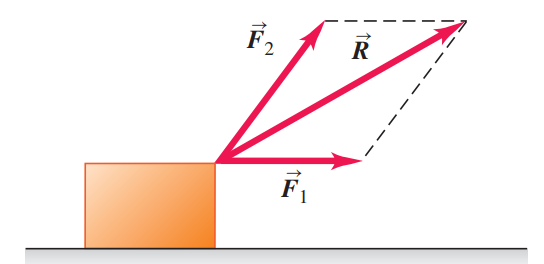
Forces can be represented by means of components.
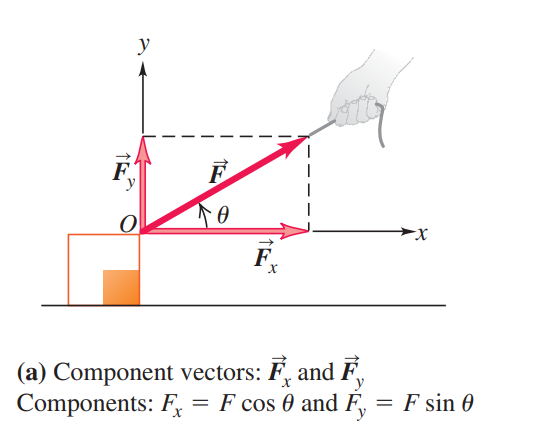
When we replace a force by its components, acting at the same point, we draw a wiggly line through the force vector to show that we have replaced it by the components.
NB: The x and y axes the components act along, need not be horizontal and vertical.
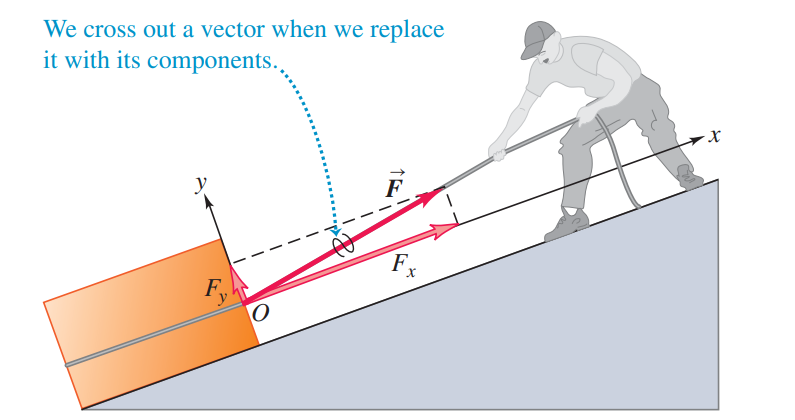
5.2 Newton's First Law
Forces act on objects so as to change their state of motion.
Newton's first law states that: “Every object continues either at rest or in constant motion in a straight line, unless it is forced to change that state by forces acting on it.”
When the vector sum of forces acting on an object is zero, the object is in equilibrium and has zero acceleration. The object will remain at rest or move with constant velocity when no net force acts upon it.
Inertia
Inertia is the tendency of an object to remain at rest, or to keep moving once it is set in motion.
The quantitative measure of inertia is mass.
Equilibrium is the condition where an object is acted on by no forces or several forces whose resultant is zero.

An object in equilibrium has zero acceleration.
Inertial Frames of Reference
Newton's first law is valid in some frames of references but not others.
Example, Newton's first law is not valid when the frame of reference is an accelerating plane.
In an accelerating plane, you feel a forward force pushing on your back, but you do not start moving forward relative to the plane. There is a forward net force but no acceleration, contrary to Newton's first law.
A frame of reference in which Newton's laws are valid is an inertial frame of reference.
NB: If Newton's first law is valid in one particular reference frame, it is also valid in every other reference frame that moves with constant velocity relative to the first.

5.3 Mass and Newton's Second Law
For a given object, the ratio of the magnitude of the force acting to the magnitude of the acceleration is constant.
The ratio is called the mass of the object.
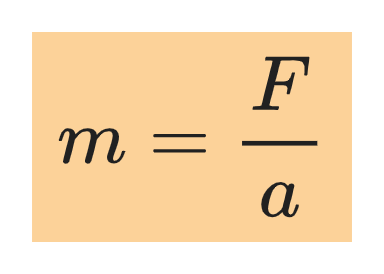
Definition of Newton
One newton is the amount of force that gives an acceleration of 1 meter per second squared to an object with a mass of 1 kilogram.

Newton's second law of motion
The resultant of all the forces acting on an object equals the object's mass times its acceleration.
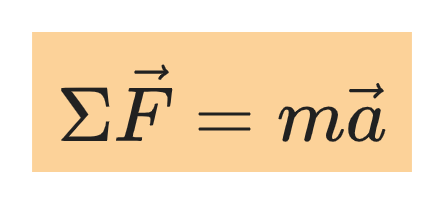
The acceleration has the same direction as the resultant force.
Newton's second law is usually used in its component form:

5.4 Mass and weight
The terms mass and weight are often used interchangeably in everyday conversation. However, there is a distinction between the two.
Mass quantifies the inertia of an object. The greater the mass, the more the object “resists” being accelerated.
Weight, on the other hand, is a force exerted on an object by the gravitational pull of the earth or some other astronomical body.
Relation of mass and weight
The weight of an object with mass m must have a magnitude w equal to the mass times the magnitude of acceleration due to gravity, g:
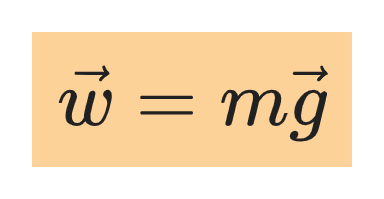
5.5 Newton's Third Law
A force acting on an object is always the result of that object's interaction with another object; thus, forces always act in pairs.
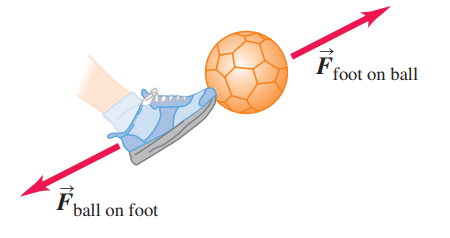
Newton's third law states that, for two interacting bodies A and B, each exerts a force on the other of equal magnitude and opposite in direction.

NB: The two forces in an action-reaction pair never act on the same object.
5.6 Free-Body Diagrams
A diagram showing all forces acting on an object, “free” of its surroundings is known as a free-body diagram. The object is represented by a point; the forces are indicated by vectors.
A free-body diagram is useful in solving problems involving forces.
Some problems may require more than on free body diagram.
Examples of free-body diagrams:
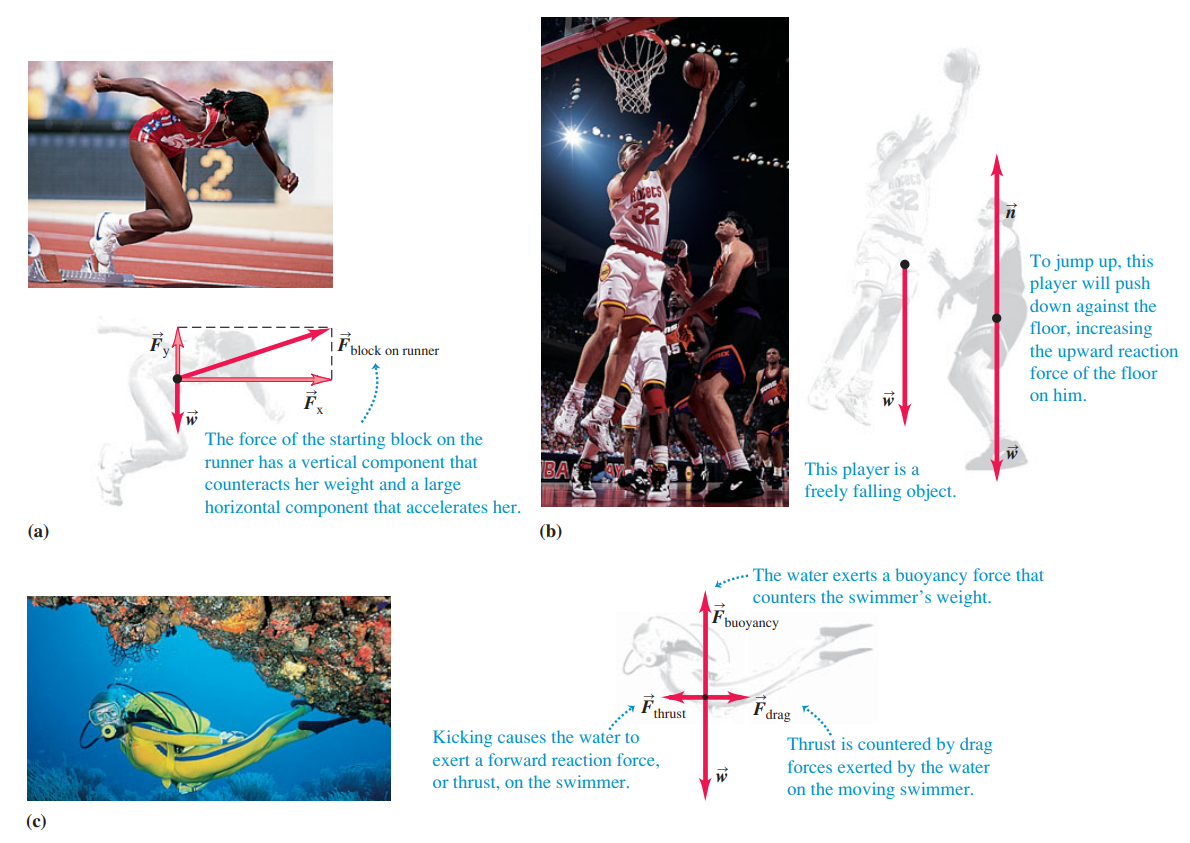
Chapter 5: Newton's Laws of Motion
Introduction
The previous chapters dealt with motion without regard for it causes i.e., kinematics. This chapter, however, deals with dynamics which is study of the causes of motion.
The principles of dynamics are summed up by Newton's Laws of motion and based on experimental studies of moving objects.
5.1 Force
A force is a quantitative measure of the interaction between two objects, represented by a vector.

A force is also a push or pull acting on an object.

Types of Forces
A force between two objects touching at a surface is called a contact force.
A contact force has two components:
a component perpendicular to the surface, known as a normal force.

a component parallel to the surface, known as friction force. This force acts to resist the sliding of the object on the surface.

A rope or cord attached to an object and pulled conveys a force known as tension.

The gravitational force exerted on an object by the earth, or other astronomical body is the object’s weight.

Measuring Force
Force is a vector quantity which means it has a magnitude and a direction. The SI unit of the magnitude of force is the newton(N).
A common instrument for measuring forces is the spring balance. It consists of a coil spring, enclosed in a case and a pointer attached to one end and is calibrated using objects of known weights.
Resultant of Forces
The resultant of forces is the vector sum of forces acting on an object.

The effect of many forces acting on a body can be replaced by the resultant force. This principle is called superposition of forces.

Forces can be represented by means of components.

When we replace a force by its components, acting at the same point, we draw a wiggly line through the force vector to show that we have replaced it by the components.
NB: The x and y axes the components act along, need not be horizontal and vertical.

5.2 Newton's First Law
Forces act on objects so as to change their state of motion.
Newton's first law states that: “Every object continues either at rest or in constant motion in a straight line, unless it is forced to change that state by forces acting on it.”
When the vector sum of forces acting on an object is zero, the object is in equilibrium and has zero acceleration. The object will remain at rest or move with constant velocity when no net force acts upon it.
Inertia
Inertia is the tendency of an object to remain at rest, or to keep moving once it is set in motion.
The quantitative measure of inertia is mass.
Equilibrium is the condition where an object is acted on by no forces or several forces whose resultant is zero.

An object in equilibrium has zero acceleration.
Inertial Frames of Reference
Newton's first law is valid in some frames of references but not others.
Example, Newton's first law is not valid when the frame of reference is an accelerating plane.
In an accelerating plane, you feel a forward force pushing on your back, but you do not start moving forward relative to the plane. There is a forward net force but no acceleration, contrary to Newton's first law.
A frame of reference in which Newton's laws are valid is an inertial frame of reference.
NB: If Newton's first law is valid in one particular reference frame, it is also valid in every other reference frame that moves with constant velocity relative to the first.

5.3 Mass and Newton's Second Law
For a given object, the ratio of the magnitude of the force acting to the magnitude of the acceleration is constant.
The ratio is called the mass of the object.

Definition of Newton
One newton is the amount of force that gives an acceleration of 1 meter per second squared to an object with a mass of 1 kilogram.

Newton's second law of motion
The resultant of all the forces acting on an object equals the object's mass times its acceleration.

The acceleration has the same direction as the resultant force.
Newton's second law is usually used in its component form:

5.4 Mass and weight
The terms mass and weight are often used interchangeably in everyday conversation. However, there is a distinction between the two.
Mass quantifies the inertia of an object. The greater the mass, the more the object “resists” being accelerated.
Weight, on the other hand, is a force exerted on an object by the gravitational pull of the earth or some other astronomical body.
Relation of mass and weight
The weight of an object with mass m must have a magnitude w equal to the mass times the magnitude of acceleration due to gravity, g:

5.5 Newton's Third Law
A force acting on an object is always the result of that object's interaction with another object; thus, forces always act in pairs.

Newton's third law states that, for two interacting bodies A and B, each exerts a force on the other of equal magnitude and opposite in direction.

NB: The two forces in an action-reaction pair never act on the same object.
5.6 Free-Body Diagrams
A diagram showing all forces acting on an object, “free” of its surroundings is known as a free-body diagram. The object is represented by a point; the forces are indicated by vectors.
A free-body diagram is useful in solving problems involving forces.
Some problems may require more than on free body diagram.
Examples of free-body diagrams:

 Knowt
Knowt
